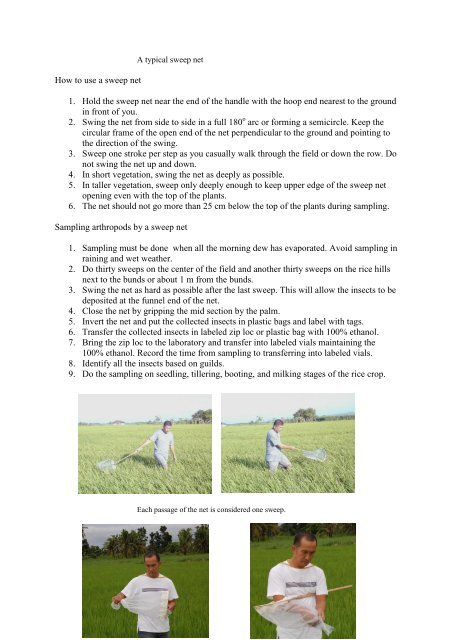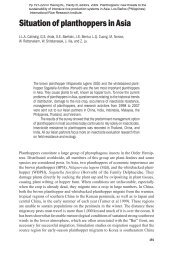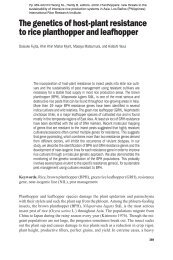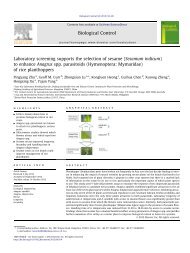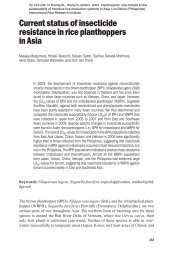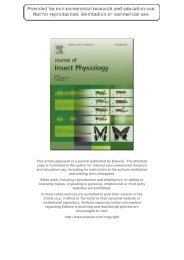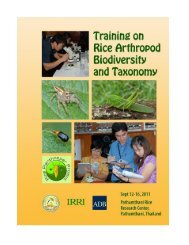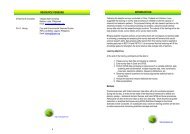Final Report Appendix 5 (Ho Chi Minh City Revised ... - Ricehoppers
Final Report Appendix 5 (Ho Chi Minh City Revised ... - Ricehoppers
Final Report Appendix 5 (Ho Chi Minh City Revised ... - Ricehoppers
Create successful ePaper yourself
Turn your PDF publications into a flip-book with our unique Google optimized e-Paper software.
<strong>Ho</strong>w to use a sweep net<br />
A typical sweep net<br />
1. <strong>Ho</strong>ld the sweep net near the end of the handle with the hoop end nearest to the ground<br />
in front of you.<br />
2. Swing the net from side to side in a full 180 o arc or forming a semicircle. Keep the<br />
circular frame of the open end of the net perpendicular to the ground and pointing to<br />
the direction of the swing.<br />
3. Sweep one stroke per step as you casually walk through the field or down the row. Do<br />
not swing the net up and down.<br />
4. In short vegetation, swing the net as deeply as possible.<br />
5. In taller vegetation, sweep only deeply enough to keep upper edge of the sweep net<br />
opening even with the top of the plants.<br />
6. The net should not go more than 25 cm below the top of the plants during sampling.<br />
Sampling arthropods by a sweep net<br />
1. Sampling must be done when all the morning dew has evaporated. Avoid sampling in<br />
raining and wet weather.<br />
2. Do thirty sweeps on the center of the field and another thirty sweeps on the rice hills<br />
next to the bunds or about 1 m from the bunds.<br />
3. Swing the net as hard as possible after the last sweep. This will allow the insects to be<br />
deposited at the funnel end of the net.<br />
4. Close the net by gripping the mid section by the palm.<br />
5. Invert the net and put the collected insects in plastic bags and label with tags.<br />
6. Transfer the collected insects in labeled zip loc or plastic bag with 100% ethanol.<br />
7. Bring the zip loc to the laboratory and transfer into labeled vials maintaining the<br />
100% ethanol. Record the time from sampling to transferring into labeled vials.<br />
8. Identify all the insects based on guilds.<br />
9. Do the sampling on seedling, tillering, booting, and milking stages of the rice crop.<br />
Each passage of the net is considered one sweep.


